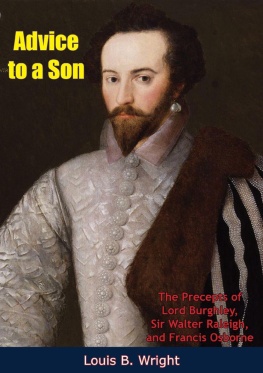CHAPTER XVII. THE MEDICAL PROFESSION
Doctor Saugrain gives notice of the first vaccine matter brought to St. Louis. Indigent persons vaccinated gratuitously. Missouri Gazette, March 26, 1809.
Science and humanity have gone hand-in-hand with the medical profession of St. Louis. When the first doctor died, it was found that 232 people owed him for services. The doctor was Andre Auguste Conde. He came to St. Louis from Fort Chartres the year after Laclede founded the settlement. He established a high standard of ethics and the doctors of St. Louis have lived up to it 146 years. Frederic L. Billon, the authority on St. Louis antiquities, concluded, after some investigation, that Conde's list of debtors was almost a directory of the families of St. Louis and Cahokia for the ten years the good doctor lived here.
The second doctor that came to St. Louis was Jean Baptiste Valleau. He was French but was in the Spanish service, being surgeon of the force which Ulloa sent to build forts at the mouth of the Missouri in 1768. Dr. Valleau, evidently, intended to stay; he applied to St. Ange to assign him a lot and entered into a contract for the building of a house. The site given him was on Second and Pine streets where the Gay building was erected long afterwards. Dr. Valleau furnished the iron and nails. Tousignau, the carpenter, agreed to supply the posts and do all of the work on a house eighteen feet long by fourteen feet wide for $60. In the performance of his professional duties Valleau made frequent trips to Bellefontaine on the Missouri where the Spaniards were building the forts. Exposure to the hot sun brought on sickness. Within a year after his coming, Dr. Valleau made his will and died. One of the principal assets of his estate was a box of playing cards, a gross of packs. Martin Duralde, the executor, had considerable trouble in disposing of the cards. The number of packs depressed the market. He waited two or three years and held an auction. In the history of St. Louis Dr. Valleau's will is the first recorded. The village was four and a half years old when he died.
After Valleau came Doctors Antoine Reynal, Bernard Gibkins, Claudio Mercier and Joachim Gingembre. These were residents for varying periods under the Spanish governors. When Doctor Mercier died, he freed his slave and gave $100 to the poor.
In 1801, responding to several successive appeals, the Spanish authority at New Orleans, concluded that St. Louis had attained the importance justifying a hospital and a government physician. Morales wrote to Delassus:
In accordance with what the Marquis of Casa Calvo agreed with my predecessor regarding a hospital and physician for the town of San Luis de Illinois, it is determined that a physician shall be appointed and that he shall have a salary of $30 a month. The appointment shall be given to Don Antonio Saugrain. A comfortable room shall be arranged in the quarters designed for a hospital. This accountant's office is to supply everything necessary for twelve beds and from this capital (New Orleans) all of the medicines that will be required will be sent. Don Antonio Saugrain will not get his salary until you have appointed him. He must keep account of all of the medicines used annually and the statement must be sent to this office written in Spanish. The medicines will be used only by the troop and marine of the king who may enter the hospital. If other people should be admitted to the hospital they must pay for the medicines at the existing prices in the market.
To St. Louis, in 1800, came a physician and scientist who was to leave his impression on the community. Dr. Antoine Francois Saugrain may be called the father of the medical profession of St. Louis and the profession may feel honored thereby. He came to the United States on the advice of Benjamin Franklin when the latter was minister to France. The young Frenchman, born in Versailles, highly educated and with developed taste for scientific investigation impressed Mr. Franklin as the kind of a man to make a valuable American. His first experience in this country was rather disheartening. After living nine years with the unfortunate French colony of Gallipolis on the Ohio river, Dr. Saugrain floated down the Ohio and made his way to St. Louis four years before the American occupation. With the Saugrains came the Michauds of Gallipolis. Dr. Saugrain had married Genevieve Rosalie Michaud, eldest of the daughters of John Michaud. Two little girls, Rosalie and Eliza Saugrain, made the journey. They became the wives of Henry Von Phul and James Kennerly, the merchants. Other daughters of Dr. Saugrain married Major Thomas O'Neil, of the United States army, and John W. Reel, the St. Louis merchant. Descendants of the Saugrains and Michauds are numerous in this generation of St. Louisans.
Possibly the reason that the medical profession had attracted so little attention up to the coming of the Saugrains was because of the good health which the community enjoyed. The eldest daughter of the doctor remembered that when the family first came to St. Louis there were few cases of sickness. When Dr. Saugrain came, he discovered that the habitants were accustomed to go to Father Didier, the priest, when they felt bad. Father Didier would fix up teas from herbs and give simple remedies, without professing to be educated in medicine. Dr. Saugrain was a botanist. He depended largely upon vegetable compounds and upon brews from herbs which he grew in a wonderful garden that surrounded his house, or gathered in the wild state.
The first case of smallpox appeared in St. Louis the year after Dr. Saugrain came. With it came a problem that appealed to the scientific mind. The virtue of vaccination was accepted by Dr. Saugrain. As soon as he could supply himself with the material, Dr. Saugrain began a campaign of education. He published cards in the Gazette explaining the preventive. He informed "such physicians and other intelligent persons as reside beyond the limits of his accustomed practice that he will with much pleasure upon application furnish them with vaccine infection." But especially noteworthy, and characteristic of the medical profession in St. Louis in all its history, was the philanthropic position taken by Dr. Saugrain toward those so unfortunate as to be unable to protect themselves. "Persons in indigent circumstances," he wrote to the Gazette, "paupers and Indians will be vaccinated and attended gratis."
From the days when St. Louis chose a doctor for the first mayor of the new city, the medical profession has done for St. Louis far more than to prescribe for physical ails. That first mayor, Dr. William Carr Lane, in his inaugural message, 1823, said: "Health is a primary object, and there is much more danger of disease originating at home than of its seeds coming from abroad. I recommend the appointment of a board of health to be selected from the body of citizens, with ample powers to search out and remove nuisances, and to do whatever else may conduce to general health. This place has of late acquired a character for unhealthfulness which it did not formerly bear and does not deserve. I am credibly informed that it is not many. years since a fever of high grade was rarely, if ever seen. To what is the distressing change attributable? May we not say principally to the insufficiency of our police regulations? What is the present condition of yards, drains, etc.? May we not dread the festering heat of next summer? If this early warning had been heeded, St. Louis might have escaped or minimized the series of terrible cholera epidemics which began in the next decade.










